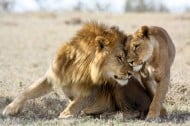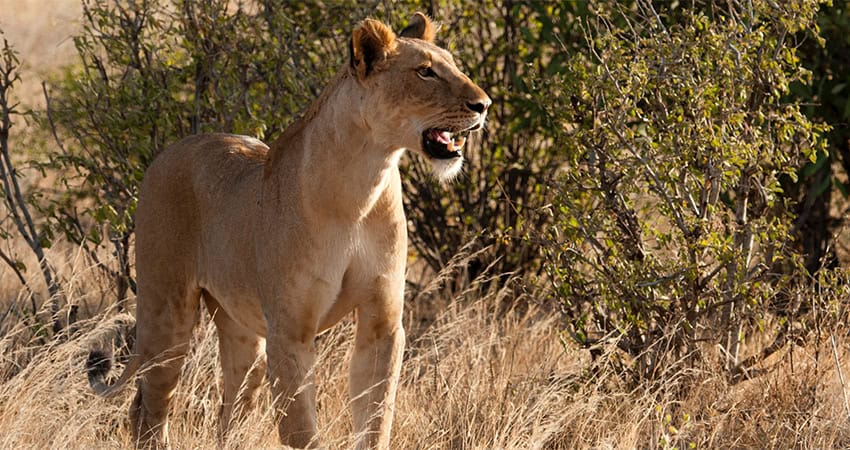
Top 10 Essential African Safari Photography Tips
Have you always dreamed of seeing Africa’s Big Five in real life? Sure, you may have seen most of them in the zoo when you were a kid, but that’s nothing compared to seeing them in their natural habitat.
Africa is a bucket-list trip for many people. If you’ve finally gotten the chance to book an African safari, make sure you’ll remember it forever.
Safari photography can be a great way to capture all the amazing experiences on your trip, but it comes with its challenges.
Do you want to make sure you get the best pictures possible? Then keep reading to discover our top 10 African safari photography tips.
1. Pick the Right Camera and Lenses
Taking good pictures starts with the equipment you bring. You’ll have a hard time capturing great shots if your camera lacks the settings and zoom requirements needed to get that perfect photo.
A DSLR camera is a great choice, but there are tons of other high-quality digital cameras that will do the job.
Be sure to bring a long lens that can zoom to around 200mm or more. Remember, you’ll have to photograph animals from far away, so a zoom lens that will let you get crisp clear shots is key.
You’ll also want a lens that allows you to take wide landscape shots. Not every amazing photo in Africa will focus on animals. Those sunsets and scenery also make wonderful pictures.
2. Choose a Fast Shutter Speed
One of the most challenging parts about wildlife photography is that your subjects can dart away in a split second. Even if they don’t run, they may lift their head up from eating or move their tail while you attempt to photograph them.
This is why you’ll want a fast shutter speed – preferably 1/1000 of a second or higher. A slow shutter speed means that little tail movement will become blurry and ruin your entire picture.
3. Bring Extra Memory Cards
The fact that animals move so quickly also means that two pictures taken only seconds apart can be vastly different. When you get a good shot of an animal, you’ll want to take several more, so you can choose the best of the best when you get home.
Be sure to bring extra memory cards so you can take as many pictures as you want without worrying about running out of space.
If you plan on using your camera a lot (and who wouldn’t?), you may also want to bring a second battery. The last thing you want is for your camera to die mid-safari and be left without a backup battery.
4. Go with a Good Operator
Having the right equipment doesn’t automatically ensure you’ll get the best pictures. Africa is becoming increasingly popular with tourists, and you may be fighting against several people to get the best position for your picture.
Going with a good safari tour operator helps ensure you can go with a smaller group so there aren’t as many people who could get in the way of your shot. Some even offer private tours, so you can cater your safari on the go to get great photos.
A quality travel company will also know more about wildlife and can help you be in the right place at the right time for the best images. If you go with a subpar company or go alone, you may miss tons of opportunities for quality photos.
5. Focus on the Eyes
Just like when photographing humans, you’ll want to focus on the eyes when taking wildlife photos. The eyes are full of emotion and can create the most stunning images.
If you’re new to photography, this is a particularly important tip. Focusing your camera on the eyes helps ensure your subject is focused correctly. If you focus somewhere else, you could end up with a bunch of fuzzy images.

6. Follow the Rule of Thirds
When you take a picture of anything, your first instinct is probably to make sure the subject of the photo is dead center in the shot. While this can make for powerful images, especially close-ups, not all images benefit from it.
Instead, you should follow the rule of thirds when taking your safari photos. This will help create more interesting and engaging photos. Plus, you’ll have a bigger variety to choose from instead of 100 pictures with a zebra in the same position.
7. Get Low
In addition to focusing on the eyes, getting low is another great trick to capture more powerful images.
When you’re on the safari, getting out of the truck (when allowed) and getting closer to the ground will put you at the same level as your subjects. This will give you more unique images instead of always taking pictures while standing or inside the safari truck.
8. Choose the Right Times
Choosing the right times to go on a safari is one of the most important aspects of safari photography for two reasons.
First, it ensures you get the best light. You can spend hours editing a picture taken in poor lighting, and it still won’t look as nice as a photo taken under good light. Make sure you go on your safari when it’s sunny and during dusk for those jaw-dropping sunset pictures.
Second, safari animals are not active all day. Many animals are active early in the morning and at dusk, but retreat to shade during the hottest parts of the day. Going when the animals are active will give you more opportunities to capture that amazing shot.
9. Bring a Beanbag
When you book a safari, you’ll have tons of options to choose from. Most people go for half day or full day safaris, meaning you’ll be out and about for hours at a time.
If you plan on using your long lens for most of the safari, you’ll need a way to support it. Using the side of a safari truck can damage to your lens, but balancing it on your hand will leave you sore quickly.
A small bean bag is ideal. It gives your lens a little cushion and leaves you with both hands free to control your camera.
10. Stay Safe
Have you ever gotten so hyper-focused on taking pictures that you didn’t notice what else was happening around you? Not only does this mean you could miss out on other good shots, but it can pose safety risks if you do it while on an African safari.
Safari tour companies do their best to ensure your safety, but you should be aware of your surroundings as well.
And remember – don’t get too close to wildlife just to get that shot. A picture isn’t worth possibly getting attacked on your dream vacation.
Try These Safari Photography Tips
If you’re planning an African safari vacation, you’ll want to ensure you get the best pictures while you’re there. Just follow our safari photography tips, so you come home with tons of great photos to remember your trip by.
Are you looking for the perfect tour operator? Check out our Kenya safaris today.
Not going to Kenya? We offer safaris in Tanzania and Zanzibar too.

